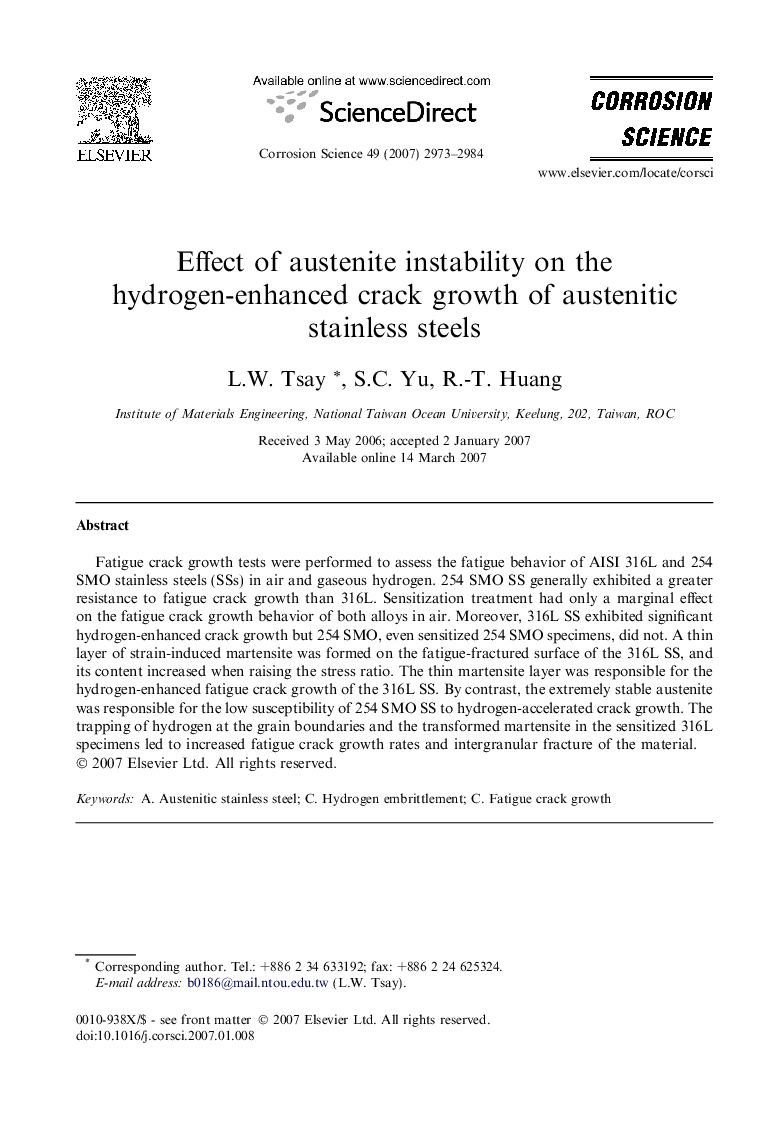| Article ID | Journal | Published Year | Pages | File Type |
|---|---|---|---|---|
| 1471510 | Corrosion Science | 2007 | 12 Pages |
Fatigue crack growth tests were performed to assess the fatigue behavior of AISI 316L and 254 SMO stainless steels (SSs) in air and gaseous hydrogen. 254 SMO SS generally exhibited a greater resistance to fatigue crack growth than 316L. Sensitization treatment had only a marginal effect on the fatigue crack growth behavior of both alloys in air. Moreover, 316L SS exhibited significant hydrogen-enhanced crack growth but 254 SMO, even sensitized 254 SMO specimens, did not. A thin layer of strain-induced martensite was formed on the fatigue-fractured surface of the 316L SS, and its content increased when raising the stress ratio. The thin martensite layer was responsible for the hydrogen-enhanced fatigue crack growth of the 316L SS. By contrast, the extremely stable austenite was responsible for the low susceptibility of 254 SMO SS to hydrogen-accelerated crack growth. The trapping of hydrogen at the grain boundaries and the transformed martensite in the sensitized 316L specimens led to increased fatigue crack growth rates and intergranular fracture of the material.
